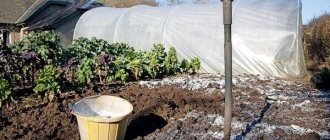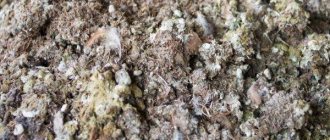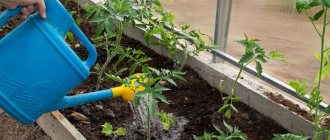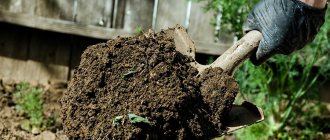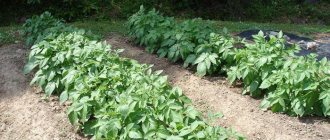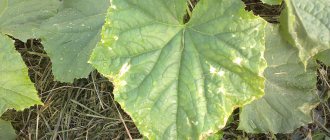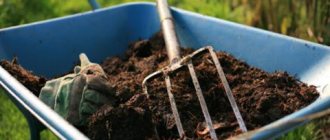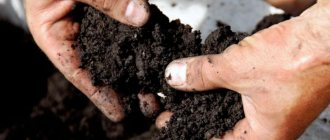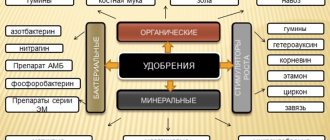To grow a good potato crop, you need fertile soil, and add fertilizer to the hole when planting.
They will help the potatoes grow and develop. For this purpose, organic and mineral fertilizers can be used. Dear readers!
For you, we have created communities on social networks in which useful articles and interesting ideas are published several times a day! Subscribe and receive useful content in a convenient format! What fertilizers to choose and how to apply them, we will talk in today’s article.
What kind of soil do potatoes like?
Potatoes prefer loose, fertile and light soil with a slightly acidic reaction. It needs to be planted in illuminated areas, protected from the north wind. Lowland and wetlands are not suitable for growing tubers.
ATTENTION! When choosing a place for potatoes, it is worth considering the rules of crop rotation. Thus, a crop cannot be grown in one place for 2 years in a row. And areas where tomatoes, eggplants, and peppers previously grew are not suitable for her. The best predecessors are cabbage, beets, cucumbers or carrots.
To get a rich crop harvest, the planting area should be prepared in advance, in the fall. To do this you need to follow simple instructions:
- Dig up the soil in the area to a depth of a spade.
- Remove plant debris and weeds.
- Scatter manure cakes over the surface of the area and sprinkle them with soil or sand.
IMPORTANT! You can use fresh organic matter only during autumn preparation. If the soil is fertilized in the spring, then rotted manure must be used. For every sq. m area you need to add 8-10 kg of organic matter.
- Additionally add mineral complexes. For every sq. m should add 12 g of nitrate, 25 g of potassium sulfate and 50 g of double superphosphate.
- In spring, thoroughly loosen the soil to a depth of 10-12 cm. If the soil is dense and clayey, then repeat the procedure before planting the crop.
- Level the area with a rake.
Pre-harvest desiccation (treatment) of bushes
Reference . Desiccation is the pre-harvest drying (dehydration) of plants to accelerate the full ripening of the crop.
Preparing potatoes for digging is easy. Some gardeners simply mow down the tops. A more convenient way is desiccation of the aerial part.
Pre-harvest treatment of potatoes with desiccant solutions is carried out for the purpose of:
- destruction of pathogens that cause diseases (late blight, fusarium, etc.); the infection first appears on leaves, stems, and gradually spreads to tubers;
- redistribution of nutrients; nutrients accumulated in the vegetative parts flow into the tubers; Root crops increase in size, are replenished with useful substances, and the taste of the crop increases.
The procedure is simple, carried out 2-3 weeks before harvest.
At home, prepare a concentrated solution for spraying potatoes before harvesting.
1 option
- 1 kg double superphosphate;
- pour 5-6 liters of boiling water;
- stir, put in a dark place for a day;
- strain, filter;
- Treat the bushes with the prepared mixture through a spray bottle;
- within a week the tops are completely dry.
Important: undissolved sediment is buried under berry bushes (currants, gooseberries) to replenish the soil with phosphorus and calcium.
Option 2
- 500 g of iron sulfate;
- 1 liter jar of urea;
- mix ingredients;
- dissolve in 9-10 liters of warm water;
- Spray the above-ground part with the mixture once;
- the tops will burn in 5-6 days.
The benefits of protective treatment of potatoes with a concentrated solution of urea and ferrous sulfate:
- completely destroys (burns out) pathogens located on the surface of the tops and soil; elimination of insect larvae (aphids, wireworms, Colorado potato beetles);
- the remaining disinfected leaves and stems are used as a layer for compost;
- the tops can be left in the beds and the area can be dug up before winter; the soil will be enriched with iron and nitrogen.
Folk fertilizers for potatoes when planting in a hole
Fertilizers for potatoes when planting in a hole can be not only expensive store-bought preparations.
For potatoes, folk remedies are often used, which are not inferior in effectiveness to mineral complexes. But such fertilizers must be prepared strictly according to the recipe. And it is also important not to exceed the recommended dosage.
Slurry
A product made from manure saturates the crop with the elements necessary for development, increases productivity, and improves soil structure. It does not harm plants, unlike fresh organic matter. How to prepare the nutritional mixture:
- Fill a barrel with a volume of 100-200 liters 2/3 with water.
- Fill the container to the top with water and cover with a lid or film.
- Leave the mixture to ferment for 10-12 days. During the process, stir the slurry 2-3 times a day.
Wood ash should be added to the finished mixture (1 kg per 100 l). You should add 1 liter of liquid to each hole.
ADVICE! Any type of manure can be used to prepare fertilizer. But the most nutritious in composition is the slurry made from horse or rabbit.
Bird droppings infusion
To make an effective remedy, you will need to follow these instructions:
- Dilute bird droppings (700 g) in 10 liters of water at a temperature of +25...+30 °C.
- Cover the container with a lid or film and place in a warm place.
- After 3 days, when the mass has fermented, strain the solution.
It is worth pouring 1 liter of the finished product into each well.
Fertilizing with herbs
Fertilizer made from mowed grass will be an excellent alternative to mineral complexes. This fertilizer contains all the substances that potatoes need, and at the same time it is safe and environmentally friendly. And it should be prepared according to this recipe:
- Fill the barrel 2/3 full with mowed grass and roots. Any plant can be used, including weeds. It is not necessary to remove the soil from the plants, but it is worth crushing them. You can add 25-30 g of urea to them.
- Fill the container with water to the brim. Stir the mixture, cover with a lid or cover with film. But you need to leave a small gap for the gas to escape.
- Leave the mixture to ferment in a place out of direct sunlight.
- The fertilizer will be ready in 2-2.5 weeks. By then the foam should have settled.
For each planting hole you need to use 1 liter of the finished mass.
Why do you need to fertilize potatoes?
Most gardeners are accustomed to the fact that crops cannot be grown without fertilizers. Potatoes consume nutrients very intensively due to a weakened root system and large tubers. In the autumn, when harvesting, most of the useful fertilizers are removed from the soil. Due to this, it is very important to make up for losses during planting in the new season. Otherwise, the harvest will be smaller and smaller every year.
A few weeks before planting potatoes, it is advisable to sow green manure (plants that improve the composition and structure of the soil).
What mineral fertilizers to put in the hole when planting a potato tuber
Mineral complexes help increase potato yields and strengthen its immunity. But the dosage of such fertilizers should not be exceeded, otherwise nitrates will accumulate in the tubers.
Ammonium nitrate
Ammonium nitrate enriches the soil with nitrogen and stimulates the development of roots and green mass. But it must be combined with phosphorus and potassium supplements. It is enough to use 5 g of saltpeter for each well.
Urea
Mineral fertilizer contains a large amount of nitrogen necessary for the normal development of roots and green mass. It should be used on wet and heavy soil, where it is more effective than ammonium nitrate.
But urea cannot be combined with alkaline fertilizers (wood ash, dolomite flour). Also, you cannot use fertilizer on soil with an alkaline reaction.
3-5 g of urea should be added to each well. It should be combined with wood ash and potash fertilizers.
Potassium sulfate
The fertilizer contains up to 50% potassium oxide, as well as sulfur, magnesium and calcium. Moreover, it does not contain chlorine, which makes it safe for potatoes. You will need to add 1 tbsp to each planting hole. l. fertilizers
Superphosphate
Phosphorus fertilizing has the following effect on the plant:
- increases productivity;
- accelerates the development of the root system;
- improves culture metabolism
- increases the starch content in tubers.
Superphosphate works on any type of soil. During the event, you will need to add 1 tsp to each cavity. drug.
Growth stimulants
Mineral fertilizers contribute to the nutrition of potatoes - their compositions include elements that act as building materials for the future harvest. There are also growth stimulants that increase resistance to diseases and adverse conditions and accelerate metabolic processes. They have the same effect on potatoes as vitamins have on humans. When treated with growth stimulants, productivity increases by 10-30%. There are several of the best stimulants for potatoes.
Epin
It has a pronounced anti-stress effect - it helps potatoes withstand sudden temperature changes, drought, and prolonged cloudy weather; increases resistance to diseases. Increasing yield results in tubers growing faster. Increases yield by 15-30%.
Epin is intended for treating seed tubers several hours before planting. 1 ml of stimulant is consumed for 1 glass of water - this is enough to process 50 kg of potatoes. The procedure is also carried out at the beginning of flowering - 1 ml of Epin is used for 5 liters of water. If plants suffer from frost, drought or lack of sunlight, they are sprayed every 7-10 days until the weather or plant condition improves.
Gibbersib
The drug helps to increase the resistance of the crop to pathogenic microorganisms - bacteria, fungi, viruses. This is an excellent prevention of common scab, late blight, leaf spot and other potato diseases. Guarantees an increase in yield by 15-30%.
The manufacturer recommends spraying plants during bud formation, flowering and after. The disadvantage of the drug is that it quickly decomposes in the sun; processing of potatoes should be carried out in the evening. 0.1 g is consumed per 2 liters of water.
Silk
This is the best natural stimulant with a pleasant pine aroma. Increases productivity by 25-30%. It contains needles, which are the main active ingredient.
Fir extract has a beneficial effect on potatoes:
- helps to survive in extreme situations;
- stimulates plant growth;
- increases resistance to diseases.
The composition also contains dietary supplements and natural triterpene acids. Because of this, Silk must be handled very carefully to avoid accidentally burning the skin. The drug is available in 1.5 ml sachets - it is dissolved in 200 ml of hot water (about 60 degrees), then the seed tubers are moistened with the solution.
In the summer, spraying is carried out with a solution prepared slightly differently - a packet of the drug is dissolved in 1.5 liters of water. Spraying is carried out twice: during budding and during the flowering period.
Poteytin
If you treat tubers with Poteytin, seedlings appear 7 days earlier than those that are not treated. The stems grow powerful, and the potatoes can more easily withstand pest attacks and the development of various diseases. Increases yield by 16-24%.
It is advisable to spray the tubers three times: before germination, planting and storage. 1 ml of stimulant is consumed per 750 ml of water. During the budding period, prepare the same solution, but in different quantities - 1 ml of Poteytin per 10 liters of water.
Bioglobin
An effective Ukrainian drug, rich in proteins that stimulate cell division. The additive acts within 24 hours, but during this period the potato cells divide twice. The root system grows 4 times, and the yield - 2 times. At the beginning of vernalization, a month before planting, the tubers need to be soaked in a solution for half an hour - 2.5 g of Bioglobin is consumed per 10 liters of water. This leads to enlargement of the eyes and rapid emergence of potatoes.
Next, the emerging seedlings are sprayed with the same solution, and after a day they are covered with earth. Two more treatments will help consolidate the result: 21 days after re-emergence, at the end of flowering. Bioglobin can be combined with fungicides, potassium permanganate, and foliar fertilizers.
Is it possible to put organic fertilizers in the hole when planting potatoes?
Potatoes can be fed organically. It is safe and easy to use, but less effective than mineral fertilizers.
Wood ash
Top dressing improves the composition of the soil, loosening it, and neutralizes excess acidity. The ash also contains potassium, which is necessary for the normal development of potatoes. When planting a culture, 200 ml of the substance is added to each well.
Humus
The fertilizer consists of manure that has been rotting for at least 2 years. It is safe for potatoes and does not cause scab or rot like fresh organic matter. At the same time, it is rich in useful elements.
When planting potatoes, you need to use 250-700 g of humus for each hole. The amount of fertilizing depends on the fertility of the soil.
Compost
Fertilizer is prepared from plant and food residues. It loosens the soil well and feeds the tubers with useful substances. But to feed potatoes, you can use mature compost that has been rotting for at least 2 years.
It is worth adding 200-250 g of fertilizer to each hole.
Organic fertilizers
Many years ago, our ancestors used organic fertilizers when growing potatoes. There are many undeniable advantages to using organic matter:
- Organic fertilizers are excellent for all types of soil and have a beneficial effect on microorganisms that enrich the soil with humus. Organic matter gradually releases nutrients, due to which the soil is not oversaturated with nutrients.
- Organic fertilizers contain many microelements - this helps to obtain balanced nutrition, which the crop needs.
- Organic matter heals the soil as quickly as possible. Next, the gardener only needs to maintain its condition without making much effort.
- Such fertilizers are absolutely safe and useful for any crops.
- The use of organic fertilizers provides potatoes with additional substances that strengthen the plant’s immune system, helping to resist diseases.
- Feeding is good because it prevents the plant from growing excessively and uncontrollably.
But organic fertilizers also have several disadvantages that need to be taken into account:
- In some regions it is very difficult to obtain organic fertilizers. For this reason, their cost is much higher than the price of mineral fertilizers.
- Organics will only work if the soil contains microorganisms that can break down organic matter into useful elements.
- During the cold season, organic fertilizers do not release nutrients into the soil.
The best organic fertilizers are:
- Ash. It contains many useful components: phosphorus, potassium, calcium and other trace elements. This fertilizing helps to significantly reduce the acidity of the soil, which is especially important for potatoes, because soil with a high acidity level is not suitable for them.
- Compost. Has beneficial properties. Available for self-cooking based on plant residues. If you add peat to the compost heap, the beneficial properties of the fertilizer will increase.
- Manure. This fertilizer consists of excrement from agricultural animals. Horse and cow manure and chicken manure are most often used. Manure is rich in nitrogen, potassium, calcium and phosphorus. It is considered one of the best fertilizers for potatoes.
How to use complex fertilizers when planting potatoes?
Mineral complexes are more balanced in composition. They significantly increase yield, strengthen potato immunity and improve the taste of tubers.
It is much easier to apply them than mineral fertilizers separately, because you do not need to measure each individual preparation.
Ammofoska
The mineral complex contains nitrogen (12%), phosphorus (15%), potassium (15%) and sulfur (14%). The combination of these elements helps to increase productivity, strengthen the crop’s immunity, and reduce the amount of nitrates in fruits. The fertilizer dissolves well in water, which provides instant results.
To feed potatoes during planting, add 1 tbsp to each hole. l. drug.
ATTENTION! The fertilizer must be distributed along the bottom of the planting hole and mixed with the soil. And only then can the tubers be placed on it.
Nitrophoska
Nitrophoska is a complex fertilizer that contains potassium nitrate, ammophos, and superphosphate. It provides potatoes with all the necessary elements, and at the same time works on heavy loamy soil. But it is important not to exceed the dosage of the drug, since its excess contributes to the accumulation of nitrates in root vegetables.
When planting potatoes, no more than 10 g of fertilizer should be added to each hole. It can be combined with other fertilizers to increase efficiency. And you should add one of the following fertilizers to your choice of nitrophoska:
- bone meal (100 ml);
- 1 tbsp. l. bird droppings and wood ash;
- 1 tbsp. l. humus and wood ash.
The mixture of fertilizers must be thoroughly mixed in the hole with soil, and only then the tuber should be placed in the hole.
REFERENCE! To feed potatoes, you should choose phosphorite nitrophoska, which, in addition, helps to improve the quality and keeping quality of the crop.
Diammofoska
The mineral complex contains all the elements necessary for potatoes, which contribute to the rapid growth of roots, tubers and green mass. The composition of the fertilizer, in addition to basic nitrogen, potassium and phosphorus, includes:
- sulfur, which increases the immunity of the crop;
- magnesium, which promotes protein production;
- zinc, which optimizes metabolic processes;
- copper, involved in photosynthesis and protein metabolism;
- boron, which prevents rotting of tubers.
The drug is produced in the form of granules with a diameter of 6 mm, colored pink or red.
Before adding diammofoska to the hole, you will need to mix the fertilizer with the soil. For each plant you need to use ½ tsp. drug. To activate the fertilizer, after application it is worth watering it with water.
Fertilizer "Potato formula". Instructions for use
A new product has appeared on the Russian fertilizer market to increase the yield of nightshade crops. This is the Potato Formula. A balanced mineral composition not only increases crop yield by 50%, but has other attractive properties. Such as:
- shortens the growing season,
- improves the taste and appearance of tubers,
- Available in easy-to-use form (granular or liquid),
- has a long-lasting effect,
- increases resistance to adverse weather conditions,
- sold at an affordable price.
A balanced chemical composition promotes the development of a good root system, which ultimately affects the quantity and quality of tubers. The application rate depends on the condition of the soil. On well-cultivated soils the norm is 90-150 g per 1 square meter. m., for the poorer people they contribute 60-120 g per 1 sq. m. m.
When digging the soil before planting and in the fall, fertilizer is applied at the rate of 60 g per 1 square meter. m., or add 15-20 g to the holes at the time of planting. In dry form, it is better to use it before rain, but it is not necessary to water it specifically.
Liquid fertilizer is used to feed potatoes 10 days after planting (before the first hilling), scattering 30-40 g per 1 square meter between rows. m., and then embedded in the ground. After 2 weeks you can spray. Before use, dilute with water at the rate of 25 ml per bucket of water. Consumption of working solution – 50-80 g per 1 sq. m. Spraying is carried out in cloudy weather or in the evening after sunset.
Effective ready-made mixtures and fertilizers for potatoes when planting
Fertilizer manufacturers produce several ready-made mixtures for feeding potatoes directly. They contain all the necessary substances in the right combination.
They often contain special components that help the crop better absorb fertilizers.
"OMU potato"
Organomineral fertilizer works on all types of soil. It differs from other fertilizers in its prolonged action. And after applying it, there is no need to additionally fertilize the planting.
Fertilizer also increases the resistance of potatoes to fungal diseases and prevents tubers from rotting.
When planting a crop, you need to add 1 tbsp to each hole. l. fertilizing To increase the effectiveness of the composition, you can combine it with potassium magnesium in a ratio of 5 to 1.
"Kemira potato"
Fertilizer is in demand among gardeners, because it has the following advantages:
- balanced composition;
- does not contain chlorine;
- increases the yield of root crops by 60-100%;
- reduces the amount of nitrates in tubers;
- safety and ease of use.
When planting crops in recesses, you will need to add 20 g of the drug.
"Fertika potato"
A balanced fertilizer includes all important microelements and does not contain chlorine. It stimulates the formation of tubers and increases their keeping quality.
Promotes normal development of the crop and increases productivity. During planting, 15 g of granules should be added to the holes.
Fertilizer technology
Due to the process of photosynthesis in plants, it is recommended to carry out all root feeding of potatoes in warm, clear weather. The superficial development of the tuber root system affects the absorption of fertilizers. In potatoes, it occurs intensively, unlike other crops.
It is necessary to add useful microelements to each potato when planting. The required volume should be poured or poured directly into the hole. The peculiarities of the formation of the root system do not allow us to do anything differently.
The root is compactly located near the mother tuber, without growing deeper into the soil. During the spring digging of the site, before the formation of the beds, it is advisable to apply complex mineral fertilizers. After planting potatoes, you should not distribute fertilizer along the upper ridge of the ground.
Important! If you need to speed up the formation of tubers, then do not forget to prepare a fertilizer from a mixture of liquid humus (250 g) and 2 tbsp. l "Superphosphate". The resulting mixture should be stirred and allowed to brew for 30 minutes.
In general, fertilizing potatoes during planting will not bring much inconvenience if you prepare for this procedure in a timely and efficient manner. By studying the timing and rates of their application, as well as calculating the required amount of fertilizing, you can get the desired harvest. The best thing you can do is become familiar with planting techniques.
Answers to frequently asked questions
Gardeners often have the following questions related to fertilizing potatoes:
Is it possible to combine fertilizers with each other?
Yes, and even necessary. Some fertilizers contain only phosphorus, others contain potassium and nitrogen. And in order for the crops to receive all the necessary elements, fertilizing should be combined.
How to combine organic and mineral fertilizers?
For example, you can combine compost with superphosphate and potassium sulfate. Wood ash and nitrophoska also go well together.
Do I need to water the hole before planting potatoes?
Yes. Most mineral and complex fertilizers are water-soluble and work only in moist soil.
Calculation of the amount of fertilizers
When calculating the required amount of fertilizer, you need to focus on the required soil composition for potatoes and the fertility of the land. In addition, many supplements contain several elements, and when compiling a nutritional mixture, the total amount of the substance in all preparations must be taken into account. This will help to avoid an overdose of soil, this is especially important in relation to nitrates.
It is important to know that fertilizers with a large amount of nitrogen can only be applied during the growth period of greenery. After flowering, tubers begin to form, and excess nitrogen will stop their growth and continue to develop tops. The result will be beautiful lush greenery, but a small and meager harvest. Phosphorus and potassium are needed for tuber development.
On average, for the entire period of potato crop growth per 1 sq. m will need:
- 20 g nitrogen;
- 40–45 g potassium;
- 10 g phosphorus;
- 5–6 g magnesium;
- other elements in smaller quantities.
But it is not recommended to add everything at once in such quantities.
For a good potato harvest, there are several proven mixtures of organic and inorganic fertilizers (calculation per 1 sq. m):
- 1 bucket of humus, 1 tbsp. ash, 3 tbsp. spoons of nitrophoska;
- 10 kg of humus, 20 g of ammonium nitrate, 20 g of potassium sulfate, 30 g of superphosphate, 450 g of dolomite flour or lime;
- 20 g of ammonium nitrate and 20 g of potassium sulfate.
In the absence of organic matter, complex fertilizers such as nitrophoska or nitroammophoska are applied.
Severely depleted soil must be fertilized with a more concentrated mixture, and for fertile soil, the amount of ingredients must be reduced.
Manure and its derivatives
Manure for potatoes is a storehouse of micro- and macroelements. It loosens the soil, stimulates the formation of a fertile layer, and helps increase the yield of vegetables. What kind of manure is best to use for potatoes? Cow and horse are considered the most suitable, they are also the most affordable.
Typically, organic matter of animal origin is introduced simultaneously with the autumn or winter digging of the soil, embedding it into the ground to a depth of about 40 cm. This measure is especially relevant for northern latitudes: biofertilizer during the decomposition process releases heat, which warms the seeds planted in the spring and the sprouting seedlings. When plowing manure, its application rate is 400 kg per hundred square meters. At the same time, it is recommended to fertilize the soil in the potato field with potassium sulfate and superphosphate. Autumn application of manure can be replaced by sowing green manure.
Rotted manure is also applied when planting potatoes. Before planting the seed, 150 g of fertilizer is placed under each tuber. The plantings are not fed with fresh organic matter, since it may contain parasites and pathogens, and evaporating ammonia compounds have a detrimental effect on beneficial soil bacteria.
It is not recommended to apply manure to the soil annually: this can lead to a deterioration in soil fertility. The optimal frequency of application is every 3-5 years.
When and what kind of fertilizing to apply?
Knowing the already described features of mineral fertilizers, we can conclude that they need to be applied according to the following scheme:
- In the fall, for digging - phosphorus (superphosphate or phosphate rock on acidic soils) and potassium (potassium chloride or sulfate) or two-component with the optimal content of phosphorus and potassium for potatoes (potassium monophosphate).
- In the spring - only nitrogen (ammonium nitrate or urea), if phosphorus-potassium is introduced in the fall; if not, then complex nitrogen-containing ones (nitroammophoska or special ones for potatoes).
- In the summer, before flowering - 20% of the amount of fertilizer already applied, but in dissolved form, so that the nutrition immediately gets to the root zone. Potassium chloride is not suitable for summer feeding; use only sulfate. It’s easier to feed with nitroammophoska.
Video: natural fertilizers for potatoes
Why do potatoes need fertilizer?
For most gardeners, it will not be a secret that crops do not need to be planted constantly in one area; the place must be changed periodically. Also, do not dilute it after tomatoes, eggplants and peppers. This method of cultivation not only significantly depletes the soil, but is also considered a factor in the accumulation of bacteria and pests in the soil. In real life, it happens that amateurs and summer residents plant potatoes in one place for many years in a row and do not change location. The reason may be a lack of planting area. So, applying fertilizer before planting potatoes is a necessary step.
Factors affecting potato yield
The following circumstances have a significant impact on the qualitative and quantitative characteristics of the potato harvest:
- Quality of seed material.
- Compliance with the rules for pre-planting processing of potatoes and seed planting standards.
- Using the correct planting technology.
- Weather and climatic growing conditions.
- Soil quality.
- Compliance with the watering regime.
- Implementation of effective and safe weed and pest control measures.
How to achieve the desired result?
- The introduction of a large amount of nitrogen-containing substances can provoke increased growth of the bush, while slowing down the development of tubers. A rational option would be the correct combination of ammonium nitrate and ammonium sulfate;
- By fertilizing the soil only with minerals, you can ensure that the soil is deficient in organic elements. Therefore, these two types should complement each other. However, an excess of organic matter can lead to the formation of voids in potatoes, since the pulp may not have time to develop with the active growth of the fruit.
- Ammonium nitrate, when applied as a single component fertilizer and in excess, can inhibit the growth of tubers.
Therefore, if you decide to fertilize the soil by selecting and combining the components yourself, be guided by the exact proportions that are necessarily written on each package of the substance.
Today, as we know, science does not stand still and in any hardware store you can buy a ready-made mixture of fertilizers for potatoes, where all proportions are taken into account. It is enough to dilute it with water, based on the specified calculation.
Growing season - root feeding scheme
Experts recommend the following scheme of root feeding during the growing season:
- fertilizing potatoes after planting, at the emergence stage;
- applying fertilizers in the phase of inflorescence formation (budding);
- feeding during the flowering period.
Experienced gardeners, in order to facilitate the process of caring for root crops, tie fertilizing to hilling. For late-ripening varieties, about 3-4 hillings will be required during the growing season; for early-ripening varieties, the procedure is carried out 2 times. The fertilizers are introduced before hilling.
Methods of application at the root
A feature of root feeding of potatoes is the incorporation of fertilizers into the deep layers of the soil, where the roots can get the necessary nutrition. Surface application of fertilizers to potatoes is not suitable. To properly fertilize, large agro-industrial farms use special equipment - feeder cultivators or hiller cultivators.
In small plots, farmers use the “stake” method. To do this, a stake is driven between the rows to a depth of 20 cm - 30 cm according to the triangle principle. That is, one recess will work for three bushes. This is done to supply the required amount of nutrition without burning the root system. Fertilizer solutions are poured into the resulting depression and sprinkled with earth, or hilling is carried out immediately so that unstable nutrients cannot evaporate.
First deposit
A sign that it is time to fertilize is usually a pale green tint of the seedlings.
This indicates a lack of nitrogen at the stage of active development of the tops. How to feed potatoes for the first time:
- 500 ml mullein/15 g urea/10 l/500 ml per bush.
Cattle manure can be replaced with poultry litter. You will need only 15 g - 25 g (1 - 1.5 tablespoons) / 10 l. Urea is interchangeable with ammonium nitrate and ammonium sulfate.
Second contribution
Nitrogen should be excluded during the second feeding . At this time, the plant devotes all its energy to the formation and growth of tubers, and the amount of harvest in the end will depend on this. The emphasis is mainly on supplying potassium, which potatoes need in large doses, and phosphorus:
- 15 g of potassium sulfate/125 ml (half a glass) of ash/15 g of double superphosphate/10 l/500 ml per bush.
Third contribution
The last feeding of potatoes is carried out no later than twenty days before harvesting the root crops. Mineral-organic mixtures used:
- 30 g simple superphosphate/250 ml slurry/10 l/500 ml per bush.
